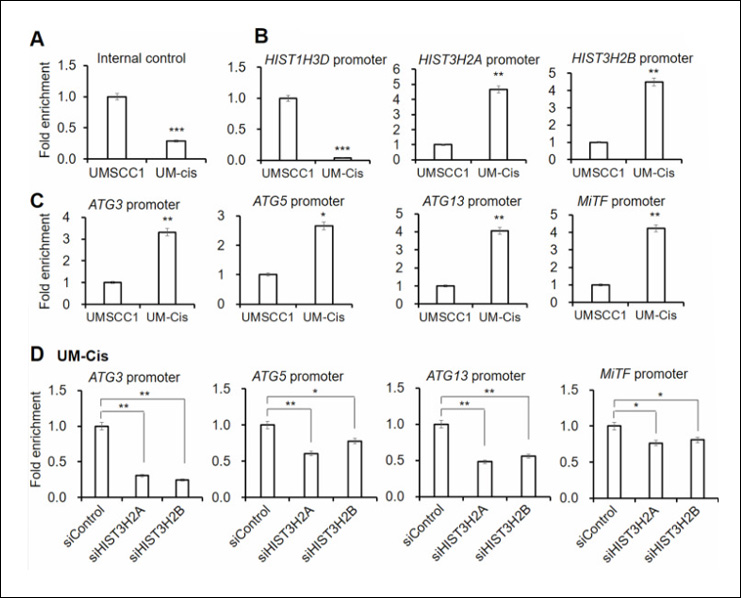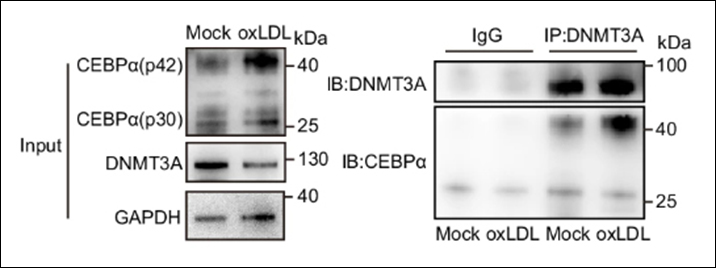Liu L et. al. (March 2025). Transposition element MERVL regulates DNA demethylation through TET3 in oxidative-damaged mouse preimplantation embryos Mol Med. 31(1):95.
This study investigates the role of the transposable element MERVL in regulating DNA demethylation during early embryo development under oxidative stress. The findings reveal that oxidative damage impairs DNA demethylation and increases apoptosis, with MERVL playing a key role in maintaining proper DNA reprogramming through TET3 activity. Knocking down MERVL disrupts this process, highlighting its essential function in embryonic development.
Products Used: 5-Methylcytosine (5-mC) Monoclonal Antibody [33D3]
Liu Y et. al. (March 2025). Skilled reaching training combined with pharmacological inhibition of histone deacetylases potentiated motor recovery after intracerebral hemorrhage in a synergic manner Brain Res. :149569.
This study explores the combined effects of skilled reaching training (SRT) and histone deacetylase (HDAC) inhibition using sodium butyrate (NaB) on motor recovery after intracerebral hemorrhage (ICH). The results demonstrate that the combination therapy significantly enhances motor function and increases neuroplasticity-related gene expression in the motor cortex. These findings suggest that HDAC inhibition may serve as a valuable approach to enhance neurorehabilitation after ICH.
Products Used: EpiQuik Total Histone Extraction Kit
Yan C et. al. (March 2025). VqERF1B-VqERF062-VqNSTS2 transcriptional cascade enhances stilbene biosynthesis and resistance to powdery mildew in grapevine Plant Biotechnol J.
This study examines the VqERF1B-VqERF062-VqNSTS2 transcriptional cascade and its role in enhancing stilbene biosynthesis and resistance to powdery mildew in grapevine. The findings demonstrate that VqNSTS2 expression increases stilbene accumulation and improves disease resistance, regulated by the transcription factors VqERF1B and VqERF062. These insights provide a molecular basis for improving grapevine resistance to Erysiphe necator through genetic and biotechnological approaches.
Products Used: EpiQuik Plant ChIP Kit
Herrero F et. al. (March 2025). Recapitulation and reversal of neuropsychiatric phenotypes in a mouse model of human endogenous retrovirus type W expression Mol Psychiatry.
This study investigates the impact of human endogenous retrovirus type W envelope (HERV-W ENV) expression on neuropsychiatric phenotypes using a transgenic mouse model. The findings reveal that HERV-W ENV expression leads to behavioral and cognitive deficits associated with altered hippocampal gene expression and disrupted histone methylation. Notably, pharmacological inhibition of LSD1 normalized these epigenetic changes and rescued behavioral impairments, highlighting a potential therapeutic approach for neurodevelopmental and psychiatric disorders.
Products Used: Epigenase LSD1 Demethylase Activity/Inhibition Assay Kit (Fluorometric)
Niekamp P et. al. (March 2025). The Nuclear Receptor NR1B1/RARα Arrests the Differentiation of Anti-Tumor Effector Cytotoxic T Cells Adv Sci (Weinh). :e2410241.
This study explores the role of the nuclear receptor NR1B1/RARα in regulating the differentiation of anti-tumor cytotoxic T cells (CTLs). The findings reveal that RARα represses the transition of CTLs into tumor-infiltrating effector cells by reducing histone acetylase activity and altering transcription factor interactions. Notably, reducing RARα expression in CAR T cells enhances their anti-tumor cytotoxicity, highlighting RARα as a potential target for improving cancer immunotherapy.
Products Used: EpiQuik HAT Activity/Inhibition Assay Kit
Guan B et. al. (March 2025). FLOT1 Is a Novel Serum Biomarker of Ovarian Cancer Targeted by N6-methyladenosine Modification Inhibition Guan B et. al. (March 2025).
This study investigates flotillin-1 (FLOT1) as a novel serum biomarker for ovarian cancer (OC) and its regulation by N6-methyladenosine (m6A) modification. The findings show that FLOT1 levels are significantly elevated in OC patients and correlate with tumor presence, improving diagnostic accuracy when combined with CA125. Additionally, inhibiting m6A modification reduces FLOT1 expression and suppresses tumor growth, highlighting FLOT1 as both a potential diagnostic marker and therapeutic target for OC.
Products Used: EpiQuik m6A RNA Methylation Quantification Kit (Colorimetric), EpiQuik CUT&RUN m6A RNA Enrichment (MeRIP) Kit
Cosseddu C et. al. (March 2025). m6A RNA methylation dynamics during in vitro maturation of cumulus-oocyte complexes derived from adult or prepubertal sheep Cosseddu C et. al. (March 2025).
This study explores the dynamics of N6-methyladenosine (m6A) RNA methylation during the in vitro maturation of cumulus-oocyte complexes (COCs) from adult and prepubertal sheep. The findings reveal significant alterations in m6A levels and the expression of methylation-related proteins, particularly in prepubertal oocytes, suggesting a role for m6A in oocyte developmental competence. This work provides novel insights into the epigenetic regulation of oocyte maturation in sheep.
Products Used: EpiQuik m6A RNA Methylation Quantification Kit (Colorimetric)
Wu M et. al. (March 2025). METTL3 Plays Regulatory Roles in Acute Pneumonia during Staphylococcus aureus Infection ACS Infect Dis.
This study examines the role of METTL3 in regulating acute pneumonia during Staphylococcus aureus infection. The findings show that METTL3 and m6A RNA methylation levels are upregulated in infected mice and cells, and knocking down METTL3 leads to increased bacterial colonization, lung damage, and inflammation. The study highlights METTL3’s protective role via the MAPK/NF-κB/JAK2-STAT3 and Pink1/Parkin pathways, suggesting its potential as a therapeutic target for S. aureus-induced pneumonia.
Products Used: EpiQuik m6A RNA Methylation Quantification Kit (Colorimetric)
Wang M et. al. (March 2025). WTAP contributes to platinum resistance in high-grade serous ovarian cancer by up-regulating malic acid: insights from liquid chromatography and mass spectrometry analysis Cancer Metab. 13(1):14.
This study investigates the role of WTAP in platinum resistance in high-grade serous ovarian cancer (HGSC) through metabolic regulation. Using liquid chromatography and mass spectrometry, researchers identified metabolic alterations, notably increased malic acid levels, linked to WTAP-mediated upregulation of ME1. Knockdown of WTAP reduced ME1 expression, altered glycolytic and citrate cycle metabolites, and increased platinum sensitivity, suggesting WTAP as a potential therapeutic target in HGSC.
Products Used: EpiQuik m6A RNA Methylation Quantification Kit (Fluorometric)
Zhou T et. al. (March 2025). METTL14 facilitates the process of sexual reversal via m6A RNA methylation in Pelodiscus sinensis Genomics. 117(3):111030.
This study explores the role of METTL14 in estradiol-induced sex reversal in the Chinese soft-shelled turtle (Pelodiscus sinensis) through m6A RNA methylation. METTL14 was highly expressed in pseudo-female individuals, and its knockdown altered methylation-related gene expression, increasing RSPO1 and decreasing AMH. These changes affected hormone biosynthesis and metabolic pathways, suggesting METTL14 facilitates sex reversal and may have implications for all-male breeding strategies.
Products Used: EpiQuik CUT&RUN m6A RNA Enrichment (MeRIP) Kit
Shi K et. al. (March 2025). The Oncogenic Role of UBXN1 in Gastric Cancer Is Attributed to the METTL16-Mediated m6A Methylation and Histone Modifications Cancer Med. 14(6):e70772.
This study examines the oncogenic role of UBXN1 in gastric cancer (GC) through METTL16-mediated m6A methylation and histone modifications. METTL16 was identified as a tumor-promoting factor that enhances UBXN1 expression by increasing its m6A modification and reducing H3K36me3 histone modification at its promoter. These findings highlight the interplay between m6A methylation and histone modifications in GC, offering potential insights for targeted therapies.
Products Used: EpiQuik CUT&RUN m6A RNA Enrichment (MeRIP) Kit




 Cart (0)
Cart (0)













